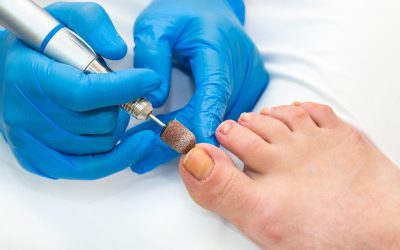Bunions–those painful, bony bumps at the base of your big toe- are more than just a cosmetic concern. They can lead to discomfort, inflammation, limited mobility, and difficulties wearing shoes. If you’re one of the millions seeking relief from bunion pain, you may have come across bunion braces as a non-surgical solution. But do they actually work?
In this blog, we’ll break down the role of bunion braces in managing bunion symptoms, when they’re effective, and when you should consider consulting a bunion doctor for more comprehensive bunion care.
What Are Bunion Braces?
Bunion braces, also known as bunion splints or correctors, are orthopedic devices designed to realign the big toe and reduce pressure on the bunion joint. They are typically worn at night or in roomy footwear during the day. Most braces are adjustable and made from a combination of soft padding and firm materials to support the toe’s position.
The main goals of bunion braces are to:
- Minimize discomfort caused by friction or misalignment
- Gently realign the toe (especially during rest)
- Provide short-term relief from inflammation
- Slow down the progression of the bunion
How Effective Are Bunion Braces?
The effectiveness of bunion braces largely depends on the severity of the bunion and the individual’s foot structure. While they do not reverse the bunion or eliminate the bony growth, braces can be beneficial in several ways:
Pain Relief
Braces can reduce pressure and irritation around the bunion area, making it more comfortable to walk or sleep. The cushioning helps minimize inflammation caused by shoe friction or joint misalignment.
Slowing Progression
When used consistently in early stages, bunion braces may help maintain better toe alignment and prevent the bunion from worsening. This is particularly useful for those with mild to moderate bunions.
Non-Invasive Support
Braces offer a non-surgical, low-risk approach to symptom management. Many people prefer to try this conservative method before exploring other interventions.
However, it’s important to note that while braces may alleviate symptoms, they are not a cure. They won’t reshape the bone or permanently correct joint deformities.
When to Use Bunion Braces
Bunion braces can be a smart addition to a broader bunion care strategy when used appropriately. Here are a few scenarios where they are most helpful:
- Early-stage bunions: If your bunion is just beginning to form, a brace may help prevent further misalignment.
- Night-time discomfort: Wearing a splint while sleeping can provide relief without the pressure of shoes.
- Post-activity recovery: If your feet tend to ache after walking or standing, wearing a brace afterward can ease discomfort.
- Before or after surgery: Some healthcare providers may recommend braces during recovery or as a way to delay surgery.
Still, it’s essential to pair brace use with other smart habits, such as wearing proper footwear, using custom orthotics, and practicing toe stretches.
When to See a Bunion Doctor
If your bunion pain is interfering with your daily life, worsening over time, or not responding to conservative measures, it’s time to consult a bunion doctor. Medical evaluation can determine whether more advanced treatment is needed, such as physical therapy, steroid injections, or surgical correction.
A specialist can also help rule out other foot conditions that may mimic bunion symptoms. Early intervention is key to avoiding long-term joint damage or complications.
For those in Arizona, Valley Foot Care is a trusted service provider offering personalized care for bunion management and other podiatric concerns. Their licensed team works with patients to explore the most effective path forward, whether it’s braces, orthotics, or corrective procedures.
What to Look for in a Bunion Brace
If you’re considering trying a bunion brace, keep these features in mind to maximize comfort and benefit:
- Adjustability: Look for braces that can be tightened or loosened based on your foot shape.
- Breathable materials: Choose lightweight fabrics that don’t trap heat or cause excessive sweating.
- Padding and support: The best braces offer both cushioning and firm alignment support.
- Day vs. night use: Some are made for active wear, while others are meant for rest. Select the right type based on your needs.
Be sure to follow instructions for proper usage and don’t wear braces for extended periods without guidance from a healthcare provider.
The Bottom Line
Bunion braces are not a magic fix, but they can be a helpful component of bunion care, especially for early-stage symptoms or temporary relief. If used consistently and combined with good footwear and self-care habits, they can improve comfort and slow progression. However, they won’t eliminate the bunion entirely.
If you’re experiencing persistent bunion pain or aren’t sure what treatment is right for you, a qualified bunion doctor can guide you toward lasting relief.

